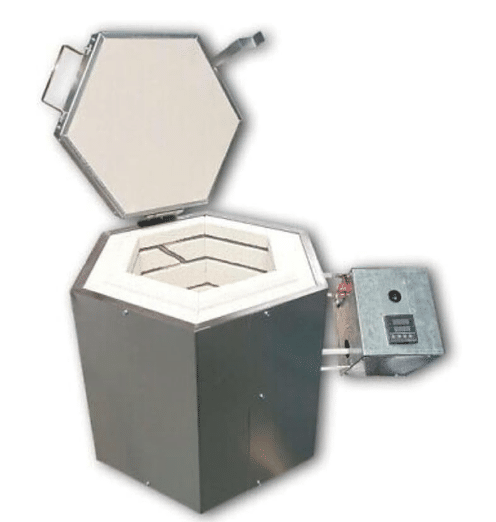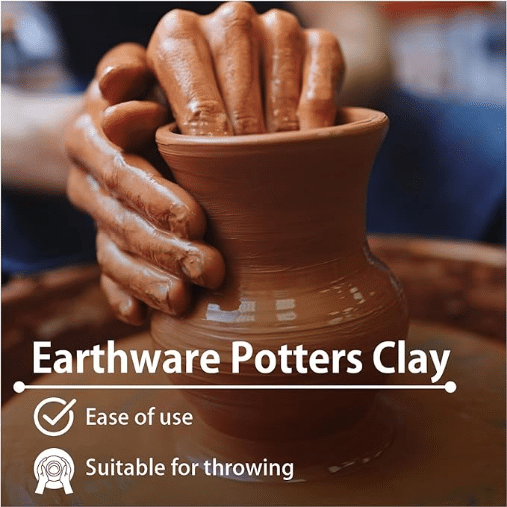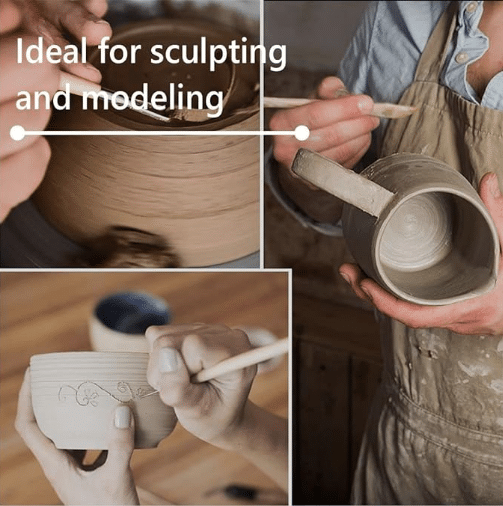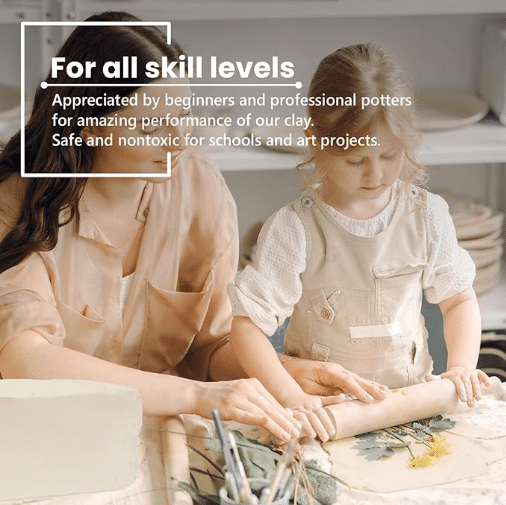Is air-dry clay safe to eat and drink from? Many artists have asked me since my last post about air-dry clay if they can make tableware (mugs, plates, etc.) for everyday use. So, I figured it would be nice to dedicate an article to clarify the difference between real clay and air-dry clay and which should be used for tableware and put in contact with food and drinks.
This page contains affiliate links, meaning I earn a commission if you use those links. Please read my disclosure for more details.
Is air-dry clay safe to eat and drink from?
No! it’s not. Air-dry clay can be toxic, and you should never eat or drink from tableware made with air-dry clay. It is unsafe for you, and it would be best if you never did that, not with air-dry clay or polymer clay tableware.
Real clay is the only clay that could ever be used for tableware. Real clay is what many people call ceramics.
So let’s talk about the types of clay that exist out there on the market.
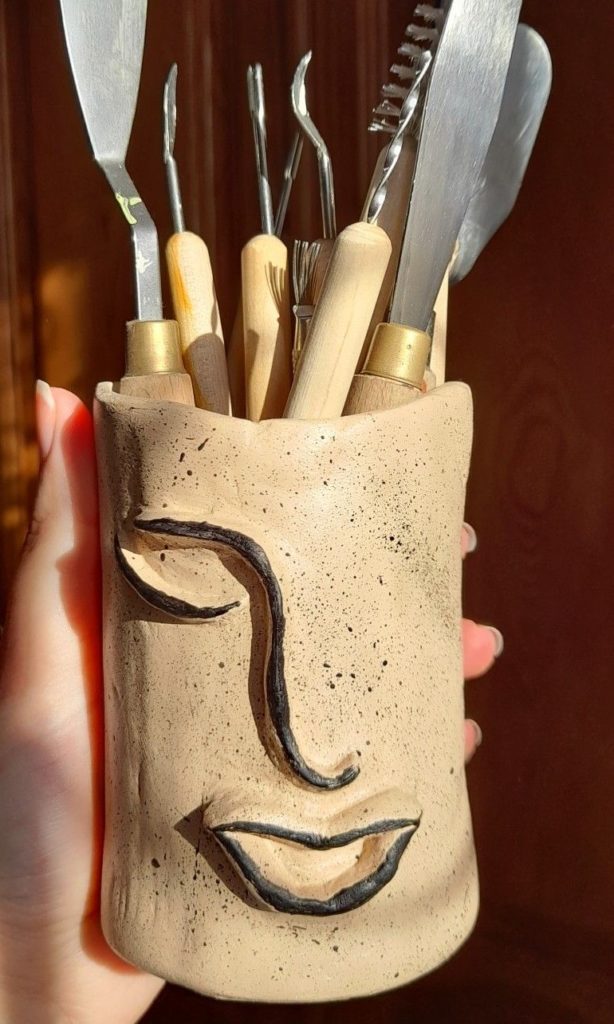
I. Real Clay
Real clay is the natural clay coming from the earth. It is the same material our ancestors have used for over eighteen thousand years. Real clay can be used for basically anything. But whatever you create will have to go into your kiln.
What is a kiln?
A kiln is a type of oven that produces temperatures sufficient to complete processes, such as hardening, drying, or chemical changes. Kilns have been used to turn objects made from clay into pottery, tiles, and bricks.
Different types of real clay:
Earthenware clay
This clay type is the orange terracotta color that should be fired at a low temperature, or the clay will melt. However, the low temperature means that the clay is not fully vitrified and that the clay particles do not turn to glass in the kiln. If a piece is not vitrified, it is not waterproof and therefore needs to be sealed with a glaze before it can be used as a vessel or as dinnerware.
The downsides of earthenware clay are that it is not as strong (think of large terracotta plant pots that can be scratched) and that it is also porous clay (commonly used for bricks, flowerpots, and construction). Once glazed, earthenware becomes watertight and food-safe, but is hand wash only.
Stoneware clay
Stoneware clay is used for making functional pottery, particularly tableware, and mugs, because it is very durable and more chip-resistant than earthenware clay.
It is also far less porous and stronger than earthenware, so it is usually the clay of choice for water-holding vessels like jugs and vases. This is because the mineral content in stoneware clay allows it to be fired at a much higher temperature in the kiln, and the pieces can become fully vitrified.
Porcelain or kaolin clay
Porcelain clay is the best-quality type of clay. It is also the most expensive and hardest type of clay to work with. Porcelain clay can look very delicate, so as well as being used for detailed sculptural artistic work, it is also convenient and a popular choice for functional items like tableware because of its toughness.
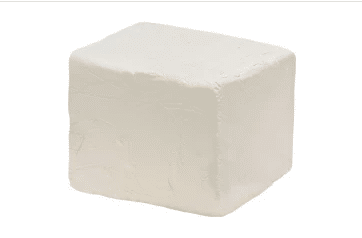
Key takeaway notes from this:
- You can only use real clay to make tableware
- Air-dry clay is not safe to eat and drink from
- You will need a kiln to bake your creations
- You can not use a home oven
- However, you don’t have to own a kiln; you can look around your city or town for someone or a business that already owns a kiln and either ask to use it or pay to use it, as kilns are quite expensive.
II. Air-dry clay
Air-dry clay is one of my all-time favorite mediums to experiment with. However, it is only suitable for sculptures (no items for daily use, and no tableware). The only reason you can’t use air-dry clay for everyday items is the fact that it’s not a very strong material, even when it’s completely dry.
Also, the reason why I previously mentioned that you should not have air-dry clay touching your food is because the clay is usually made of some mixture of paper, glue, resin, and other toxic ingredients that I wouldn’t recommend you eat from.
I have an article on how to make your own paper mache clay if you’d like to check that out.
Pros and cons of air-dry clay
Air-dry clay is:
- Easily accessible
- It needs no oven or baking to dry
- Can be painted and sealed with accessible materials (painted with acrylics and sealed with resin or vernis)
- You can embed things into it to spice it up (adding charms, stones, or other decorations)
- It’s not food-safe
- It’s fragile and would easily break, even if it’s finished with a seal
Conclusion
Please let me know if you’d like me to cover further types of clay and explain what the purpose of each one is. And until then, enjoy creating <3

